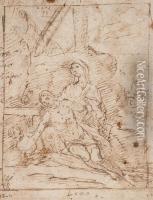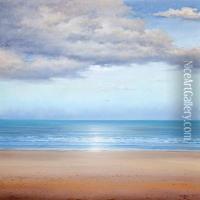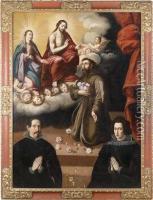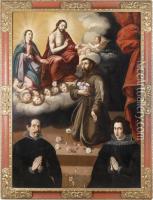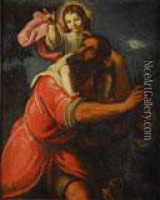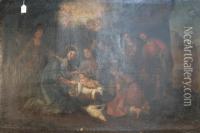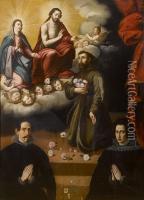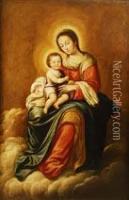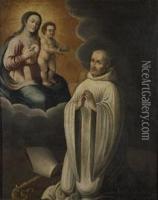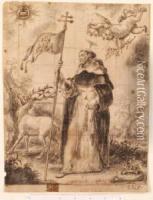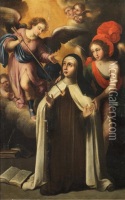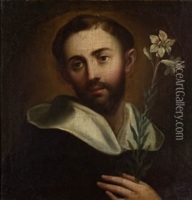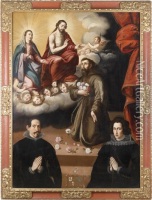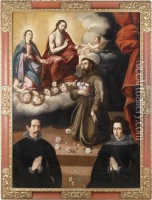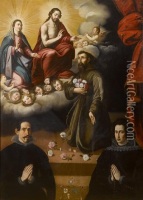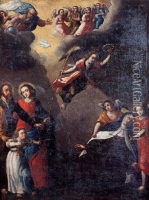Juan Del Castillo Paintings
Juan del Castillo was a significant figure in the Spanish Baroque art movement, born in 1584 in Seville, Spain. His contributions to the world of art are often overshadowed by his more famous students, such as Bartolomé Esteban Murillo and Francisco de Zurbarán, yet his impact on the development of Spanish painting during the 17th century is undeniable. Del Castillo's work is characterized by its religious themes, a common focus for artists of his time, and he was particularly noted for his skillful use of light and shadow, which would later influence the works of his students.
Del Castillo came from a family with artistic ties; his father was a painter, and this environment undoubtedly nurtured his early interest in art. Despite the prominence of his family in the local art scene, little is known about his formal training. It is believed that he may have studied under Antonio Mohedano or Andrés Pérez, prominent painters of the period. By the early 17th century, del Castillo had established himself as a master painter in Seville, running a successful workshop that attracted many young artists.
Throughout his career, Juan del Castillo produced a vast array of works, including altarpieces, frescoes, and canvas paintings. His religious paintings, in particular, were highly sought after by local churches and confraternities. Del Castillo's art was not only an expression of his devout faith but also a reflection of the Counter-Reformation's influence on Spanish art, seeking to inspire piety and devotion through visual means.
Despite his success and influence, Juan del Castillo's works have not survived as well as those of his students, leading to a somewhat diminished recognition of his contributions to art history. However, his teaching legacy is profound. Del Castillo's workshop was a crucible for the development of the Sevillian school of painting, and his mentorship of artists like Murillo and Zurbarán helped shape the future of Spanish art. His emphasis on the dramatic use of light and shadow would become a hallmark of the Baroque style, not only in Spain but across Europe.
Juan del Castillo's life and career came to an end in 1640, but his artistic legacy continues to be studied and appreciated by art historians and enthusiasts alike. Though many of his original works have been lost to time, his influence lives on through the achievements of his students, making him an enduring figure in the history of Spanish art.

